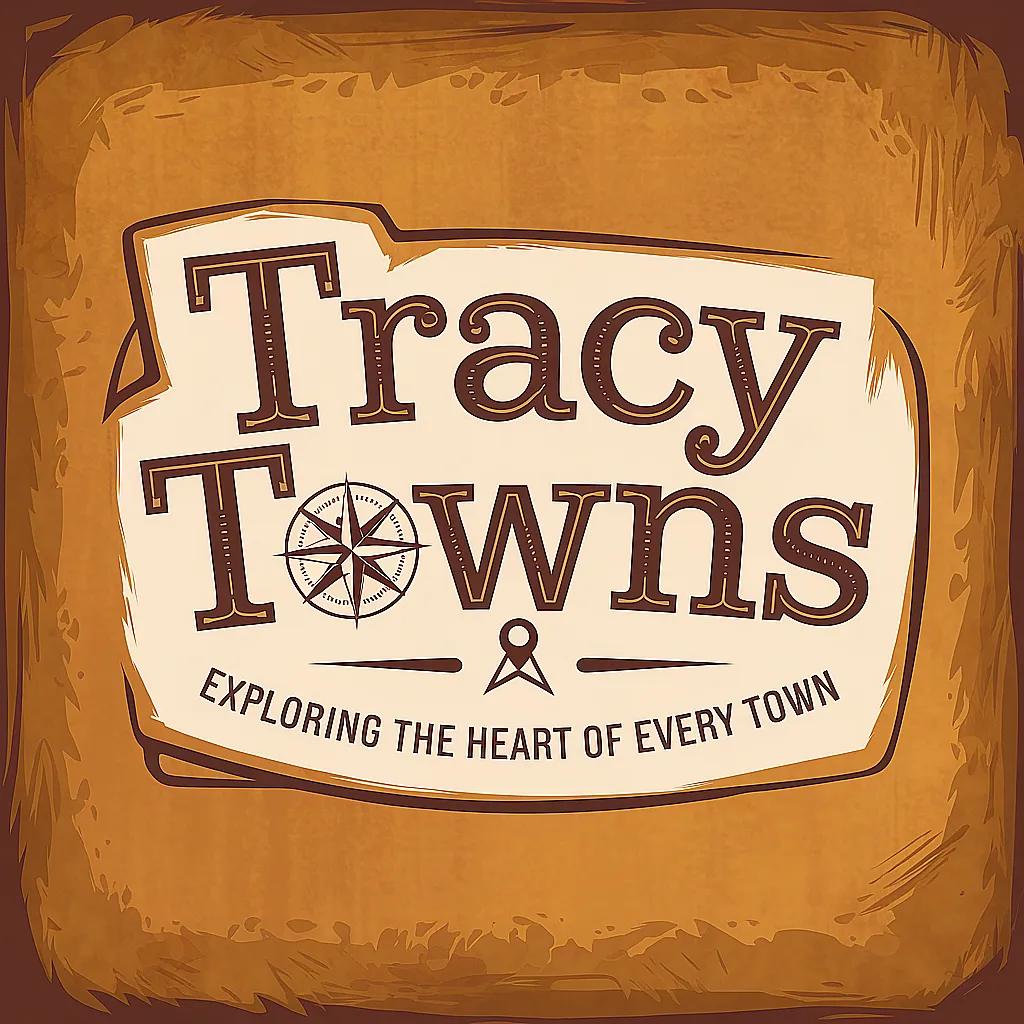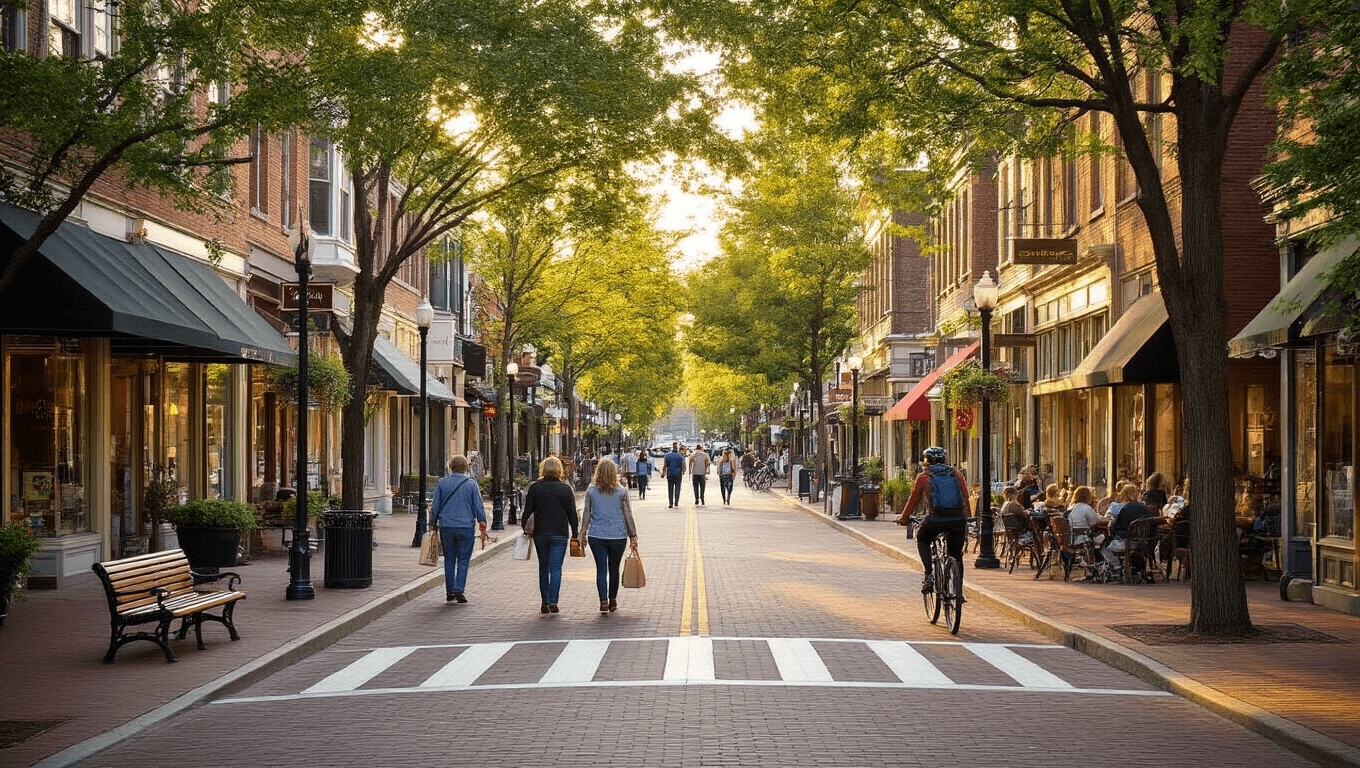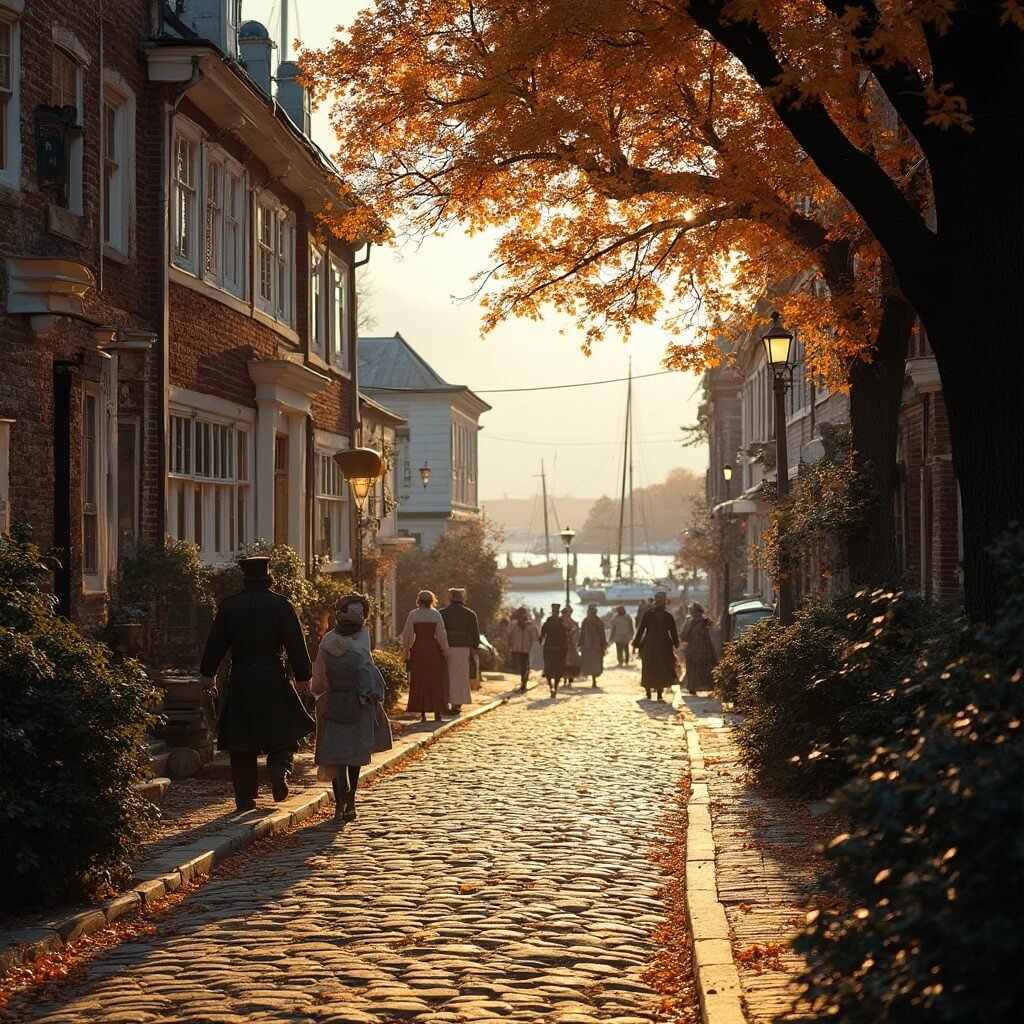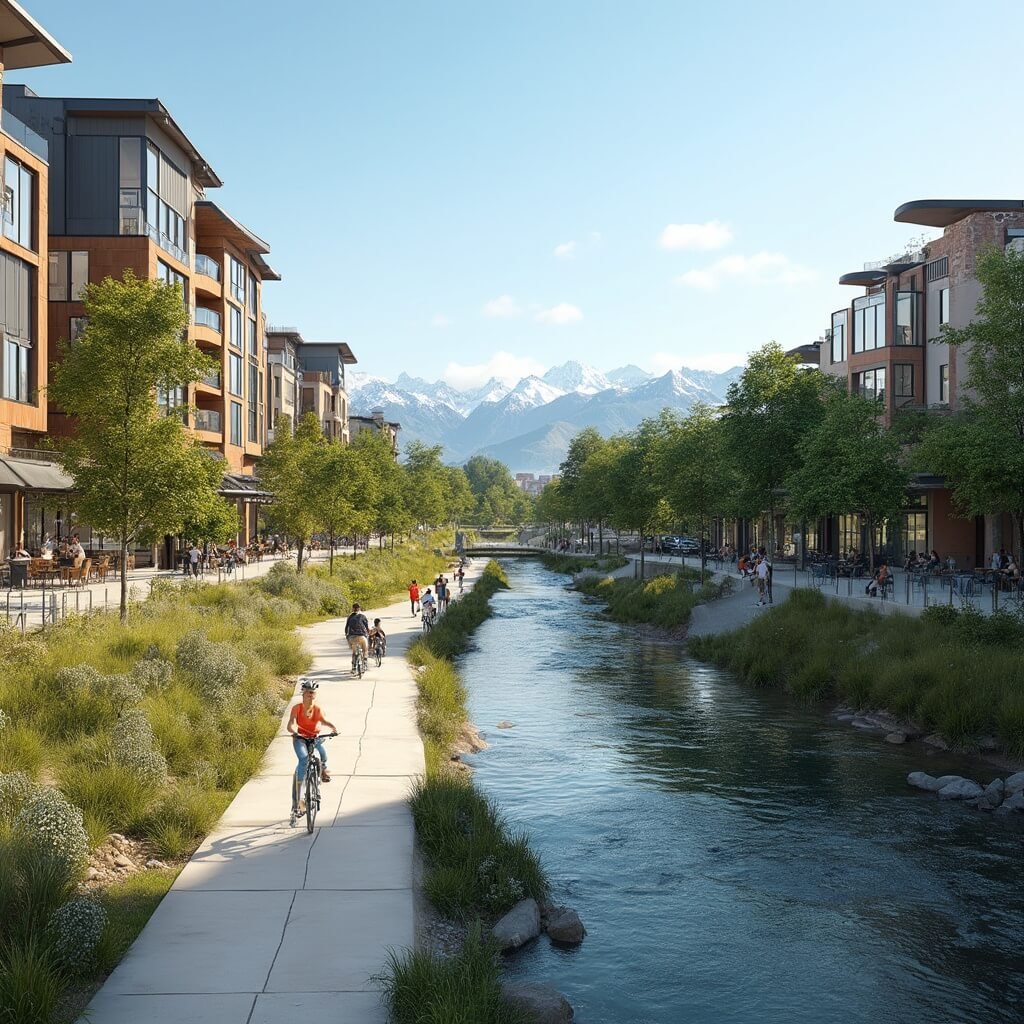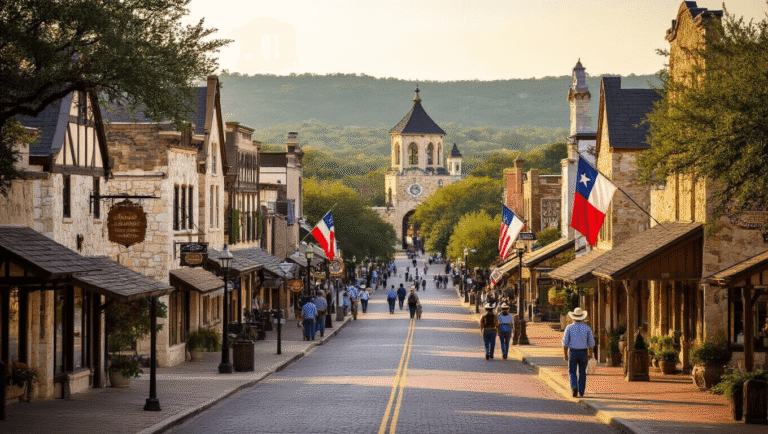Ever wondered what makes a small town truly magical? It’s not just picturesque landscapes or quaint cafes—it’s walkability. That magical quality where every destination is just a pleasant stroll away.
Let me break down why walkable towns are the hidden gems of American living.

What Makes a Town “Walkable” Anyway?
Contents
- What Makes a Town “Walkable” Anyway?
- Why Walkability Matters More Than You Think
- My Personal Walkability Wake-Up Call
- The Urban Design Secret Sauce
- Top Walkable Small Town Spotlights
- Hidden Walkable Gems
- Economic and Social Dynamics
- Challenges to Consider
- Regional Walkability: Beyond the Obvious Hotspots
- The Northeast: Walking History’s Footsteps
- Western Towns: Nature Meets Urbanism
- Midwest’s Surprising Walking Paradises
- Affordability: The Walkability Wild Card
- Technology’s Role in Future Walkability
- Personal Walking Revolution: My Boise Experience
- Sustainability: Walking as Environmental Statement
- The Next Frontier: Inclusive Walkability
- Questions Every Walking Enthusiast Should Ask
- Final Thoughts: Your Walking Journey Begins Now
Walkability isn’t just about having sidewalks. It’s a complex dance of urban design, community planning, and human-centric infrastructure. Picture a town where:
- You can grab morning coffee without starting your car
- Shops, parks, and restaurants are within easy walking distance
- Streets feel safe and inviting for pedestrians
- Public spaces encourage community interaction
Why Walkability Matters More Than You Think
A stunning 79% of Americans consider walkability crucial when choosing a place to live. And they’re onto something big.
Walkable communities deliver incredible benefits:
- Improved public health
- Reduced environmental impact
- Stronger local economies
- Enhanced social connections
- Lower transportation costs
My Personal Walkability Wake-Up Call
I discovered the magic of walkable towns during a trip to Burlington, Vermont. One morning, I walked from my downtown hotel to a local farmers market, then to Lake Champlain’s waterfront—all without touching a car key. The freedom was intoxicating.
The Urban Design Secret Sauce
Walkable towns aren’t accidents. They’re carefully crafted environments with:
- Compact, grid-like street layouts
- Mixed-use zoning
- Pedestrian-only zones
- Integrated green spaces
- Short distances between key destinations
Top Walkable Small Town Spotlights
1. Burlington, Vermont
Imagine a pedestrian paradise with the Church Street Marketplace—a car-free zone buzzing with life, local shops, and incredible energy.
2. Ann Arbor, Michigan
A university town where walkability meets intellectual vibrancy. Mid-block passages, car-free zones, and a constant stream of cultural events make every walk an adventure.
3. Santa Barbara, California
Spanish colonial design meets coastal walkability. Stunning pedestrian paseos, beach accessibility, and a promenade that feels like a movie set.
4. Charlottesville, Virginia
Historic pedestrian mall, university-adjacent neighborhoods, and a downtown packed with theaters and local dining spots.
5. Savannah, Georgia
Twenty-two historic squares break up the street grid, creating a walking experience that feels like time travel. Landmarks, museums, and riverfront promenades await every step.
Hidden Walkable Gems
- Cascade Locks, Oregon: A tiny walkable core nestled in the Columbia River Gorge
- Moab, Utah: Downtown proximity to national parks and adventure outfitters
- Bay St. Louis, Mississippi: Charming “Old Town” with restored train depot
- Winterset, Iowa: Historic square with cultural attractions
Economic and Social Dynamics
Walkable towns aren’t just pleasant—they’re economically smart. They typically feature:
- Higher property values
- Stronger local business climates
- More community engagement
Challenges to Consider
It’s not all perfect. Some walkable towns face:
- Higher living costs
- Limited affordable housing
- Tourism management challenges
As urban landscapes evolve, walkability becomes less of a luxury and more of a lifestyle choice. Cities are reimagining spaces, prioritizing human connection over car-centric designs.
Want to know which other surprising towns make walking a joy? The next part of our journey will reveal even more walkable wonders that might just change how you think about small-town living.
Explore more pedestrian-friendly towns in our guide to 6 U.S. Small Towns with the Best Main Streets or plan your next getaway with our curated list of 10 Small-Town Road Trips to Add to Your Travel List.
👇Find The Cheapest Flights To Anywhere Here👇
Regional Walkability: Beyond the Obvious Hotspots
Not all walkable towns look the same. Regional differences create unique pedestrian experiences that might surprise you.
The Northeast: Walking History’s Footsteps
New England towns practically invented walkable urban design. With compact colonial layouts and preserved historic districts, walking here isn’t just transportation—it’s time travel.
Example: Portsmouth, New Hampshire transforms every stroll into a historical narrative. Cobblestone streets, preserved 18th-century buildings, and waterfront paths make every step a journey through American history.
Western Towns: Nature Meets Urbanism
Out west, walkability takes on an adventurous twist. Towns like Bend, Oregon seamlessly blend urban amenities with outdoor accessibility.
Key Western Walkability Features:
- Direct trail access from downtown
- Bike-friendly infrastructure
- Easy transitions between urban and natural environments
- Outdoor recreation integration
Midwest’s Surprising Walking Paradises
Forget stereotypes about car-dependent midwestern landscapes. Towns like Madison, Wisconsin prove walkability isn’t just a coastal phenomenon.
Key Insights:
- University towns often lead walkability innovations
- Community-driven urban design
- Lower cost of living compared to coastal equivalents
Explore more hidden walkable gems like Prescott, Arizona and Cape May, New Jersey.
Affordability: The Walkability Wild Card
Here’s a mind-blowing stat: Not all walkable towns require a tech CEO’s salary.
Affordable Walkable Towns:
- Chattanooga, Tennessee
- Boise, Idaho
- Asheville, North Carolina
- Louisville, Kentucky
These cities offer incredible pedestrian experiences without astronomical housing costs. For more ideas, check out Cheapest Walkable Cities in the US.
Technology’s Role in Future Walkability
Smart city technologies are revolutionizing how we experience urban spaces.
Emerging Walkability Technologies:
- Real-time pedestrian mapping
- Smart crosswalks
- Mobile apps tracking walking routes
- Integrated public transit tracking
- Climate-adaptive urban design
Personal Walking Revolution: My Boise Experience
During a work trip to Boise, I discovered a walkability paradise that defied expectations.
One morning, I walked from my downtown hotel to a local coffee shop, then to a riverside park, all within 15 minutes. No car. No stress. Pure urban freedom.
The town combined affordability, natural beauty, and pedestrian-friendly design in a way I’d never experienced. It reminded me of Middleburg, Virginia for its small-town charm and accessibility.
Sustainability: Walking as Environmental Statement
Walkable towns aren’t just convenient—they’re climate solutions.
Walking Impact:
- Reduces carbon emissions
- Decreases traffic congestion
- Promotes healthier lifestyles
- Supports local economic ecosystems
Learn more about sustainable small-town living through Walkable Cities and Small Towns.
The Next Frontier: Inclusive Walkability
Future walkable communities must prioritize:
- Accessibility for all mobility levels
- Multigenerational design
- Universal design principles
- Safe, welcoming public spaces
Questions Every Walking Enthusiast Should Ask
- How walkable is my current neighborhood?
- What infrastructure improvements could enhance walking?
- Are local policies supporting pedestrian-friendly development?
Final Thoughts: Your Walking Journey Begins Now
Walkability isn’t just an urban planning concept—it’s a lifestyle choice.
Whether you’re a retiree, young professional, or family seeking connection, walkable small towns offer something profound: The ability to live, not just exist.
Explore charming destinations like Rehoboth Beach, Delaware or Friday Harbor, Washington to start your walkable life adventure.
Your perfect walking town is out there. All you need is curiosity, an open mind, and comfortable shoes.
Ready to take your first step toward a more walkable life?
👇Ready To Book Your Trip?👇
This post may contain affiliate links. Please see my disclosure policy for details.

